Ayurvedic Essence
|
Vata dosha is made up of the elements ether and air making it the lightest of the doshas. In Ayurveda, Vata governs the nervous system and all movement through the mind and body including our thoughts. When Vata dosha is in harmony it brings a sense of lightness, creativity and adaptability to change, but what happens when Vata dosha becomes imbalanced through day to day living or a change in our environment? With qualities similar to the wind: light, mobile and drying - we may begin to experience these same qualities through the symptoms of dry skin, dry hair and a sense of ‘spaciness’. Also feeling light headed, anxious or depleted of energy. These can be our cues to rest, to adjust our diet and to soothe Vata dosha. What you can do: Take in the sights and sounds of nature. A tranquil lake, green grass and the shade of the trees all help to soothe the senses and create a sense of calm.
*Specific dietary recommendations are available through a personalised consultation suited to your dosha. You can find out more here Herb in Focus: Lemon balm 'A cup of lemon balm tea - fresh from my garden. I love the lemon scented fragrance and the refreshing, soothing taste.' A sweet nutty treat... full of nutrition, quick to make and delicious!
With so many choices in herbal teas - there is always a new variety to discover. Which is your favourite herbal tea? If you would like to share, click in 'comments' and follow the prompts Workshop News... Thank you to everyone who attended the latest 'Foundation for Health' workshop! Workshop feedback can be read here. You can also find future workshop dates here. Wishing you a happy and healthy festive season - keep well and stay nourished... The information in Nourish Notes is for educational purposes only and is not intended to treat diagnose, prescribe or heal any health condition or to replace standard medical treatment or advice.
0 Comments
Spring nourishment - to help keep you in harmony Ayurveda encourages us to feel the ‘qualities’ around us and within us from the foods that we eat to our emotions and physical symptoms. This also includes the changing qualities of the seasons. The awareness of these qualities helps us to make informed choices to keep our dosha’s in harmony through lifestyle and diet. Spring is the season when the heavier qualities of earth and water which govern Kapha dosha, become more liquid as the warmth and upward energy of the new season begins. Kapha dosha which can accumulate in the body during winter, begins to melt and liquify. You may find you have itchy eyes, a runny nose and sinus congestion as allergies become more common at this time of year. Herbs that can help in spring: Ginger, black pepper and mint, cumin, coriander and fennel. A refreshing tea can be made from cumin seed, coriander seed and fennel seed in equal amounts (a teaspoon of each to a small teapot). Change with the season: Now is the time to introduce lighter food - look out for what's in season: Victoria, Australia: artichokes, asian greens, asparagus, avocados, broad beans, broccoli, cabbage, carrot, cauliflower, leek, lettuce, mushrooms, peas, silver beet and spinach. Grapefruit, lemons, limes, mandarins, oranges, papaya, paw paw, pineapple and strawberries. Avoid heavy, oily food and sour, sweet and salty foods as these promote kapha. Minimise dairy products, especially in the morning and in the evening - icecream and chilled milky drinks tend to increase kapha dosha. Try new recipes that call for seasonal and where possible local produce: artichoke dip, avocado dip, broad bean and pea salad, a variety of stir fry's and nutritious smoothies. Treat yourself to refreshing herbal teas. Green tea is wonderful for helping to cleanse toxins (Ama) and boost the immune system due to its high level of anti-oxidants. Aim to include a cup a day to help improve digestion and mood. Add a little lemon zest or mint for extra flavour. Make the most of the brighter days with outside activity - walking, picnics or catching up with friends. Breathe in the fresh air and relish the warmer days of spring! Plant in focus: Aloe Vera Aloe Vera has been valued for its medicinal properties for at least 2,000 years. It has been used for the healing of wounds, skin irritations, rashes and sunburn as well as being used as a digestive aid and a general tonic for the liver. Although it looks like a cactus it is a member of the lily family. It has sweet, bitter and cooling qualities which are especially good for Pitta dosha whilst also being supportive to all three dosha's. Helpful for ...
Garden update... The empty veggie patch featured previously, is now flourishing with new produce! Bok choy, beetroot, cabbage, broccoli, spinach and kale. Broad beans, mint, spring onion, garlic and strawberries. I've really enjoyed picking the leaves to use straight away in the kitchen for stir fry dishes, salads and smoothies for a burst of fresh nutrition. Definitely worth the effort, although I've had to add a structure with white netting to deter a little night time animal from nearly eating the lot! Workshop My next Ayurveda 'Foundation for Health' workshop is on Saturday 10th October 1 pm - 5 pm in Ferntree Gully - Victoria. Come along to learn about your Dosha and what you can do to nourish your health. Afternoon tea will be included along with all workshop material. To find out more or to book your place, email me at lieslhorne@gmail.com The information in Nourish Notes is for educational purposes only and is not intended to treat, diagnose, prescribe or heal any health condition or to replace standard medical treatment or advice.
Winter in Ayurveda brings 'Kapha season' where the qualities of cold, moist, slow and heavy prevail, beckoning us to slow down, rug up and to stay warm. Ayurveda recommends finding a balance between relaxation and activity during winter to keep our dosha's in harmony. The elements of earth and water govern Kapha dosha providing us with the benefits of strength, stability, structure and fluidity. When this dosha accumulates it can cause us to feel sluggish, tired and full of congestion. Here are my 5 tips to help balance Kapha dosha...
 Black Pepper - excellent for stimulating digestion and increasing circulation. Helps to cleanse toxins by heating 'Agni' the digestive fire which in turn helps to rid the body of toxins. It also helps to clear sinus congestion and excess mucus that can occur in winter. Use in: general cooking, to season your food and in Chai tea. Add a pinch of black pepper to a teaspoon of raw honey to help clear congestion.  Cardamom - has a warming action that is particularly good for the cold qualities of Kapha. It helps to stimulate the spleen and remove excess of Kapha from the lungs by promoting Agni. A pinch of cardamom added to milk helps to neutralize it's mucus forming properties. Use in: curries, soups, casseroles. A key ingredient in a Chai tea. Crush the pods to release the seeds and aroma. You can also use ground cardamom.  Turmeric - is an excellent natural antibiotic, while at the same time strengthening digestion. It helps to purify the blood and stimulate new blood tissue. Turmeric promotes metabolism in the body, helping to correct both excesses and deficiencies. It also aids the digestion of protein. Use organic dried turmeric or fresh turmeric root. Use in:general cooking, steep in a tea (1/2 to 1 tspn in a small teapot of water). Add to a fresh vegetable juice. Tea remedy using the above 3 spices... This is a great tea remedy to take with you in a flask. It helps to soothe a sore throat, clear congestion and really helps to lift your spirits when you are feeling run down. In a small saucepan heat: 1 tblspn of freshly grated turmeric and 1 tspn dried turmeric 1 tblspn of grated fresh ginger and 1 tspn of dried ginger Add a generous pinch of black pepper and ground cardamom 1/2 - 1 cup of water When heated through and fragrant, add this mixture to a small glass jar that has been sterilized with boiling water. Add 2 teaspoons of this mixture to a medium sized drinking flask. Keep the remainder in the jar to use over the next couple of days. Add 2 cups pre-boiled water to the flask, add the juice of 1/2 a lemon and a teaspoon of raw honey. Ready to go! Precaution: The ginger in this recipe can increase Pitta dosha. Planting in the garden... A fresh start for my veggie patch with new soil ready for these new seedlings: Do you have a favourite spice to use during winter? What are you planting in your veggie patch? If you feel inspired to share, please click in 'comments' and follow the prompts. Workshops Ayurveda Foundation for Health Workshops - Are you interested in learning more about Ayurveda to support your health? Contact me at lieslhorne@gmail.com for details about my next workshop. The information in Nourish Notes is for educational purposes only and is not intended to treat, diagnose, prescribe or heal any health condition or to replace standard medical treatment or advice. 'A warming breakfast of Spiced Quinoa and my favourite ginger tea' As the mornings grow colder, we are naturally drawn towards more warming foods. Here is a simple, warming breakfast that is light, delicious and full of nutrition to kick start your day - it's also super quick and easy to make... Spiced Quinoa Breakfast
Quinoa (pronounced keen-wah) is a seed that is high in protein, gluten free and warming in nature. It is easily digested by all three dosha's. *Vata - this warming, lightly spiced breakfast is wonderful for Vata dosha *Kapha - can add toasted slivered almonds instead of walnuts as they are less oily/heavy *Pitta - ginger and cinnamon are warming - you may like to reduce the amount if you feel they are too heating for you. *Use organic ingredients where possible My favourite Ginger Tea - with turmeric and raw honey This golden ginger tea will warm you up from the inside out and provide you with all the health benefits of turmeric, ginger and honey, helping to keep your digestive fire a-glow! Grate the fresh ginger and turmeric. Place in a tea strainer or teapot and steep in boiled water for 5 minutes. If using dried turmeric and ginger, add this to the tea strainer and steep. Pour the tea into a cup and add a dash of raw honey to taste. *Most beneficial for Vata and Kapha dosha due to the heating qualities of the ingredients. Pitta can reduce the amount of ginger or replace with a teaspoon of dried fennel seeds. Both the Spiced Quinoa breakfast and the ginger turmeric tea help to kindle the digestive fire (Agni) which supports metabolism and boosts the immune system. *Most beneficial to Vata and Kapha dosha. *This can be too heating for Pitta dosha to have together. Try Fennel tea with turmeric instead. Workshops Food as Medicine Workshop - Saturday 16th May at Kozen Yoga click here for further details... Enjoy the 'rest' of Autumn and all the beauty this season brings...
'keep well, warm and nourished with your Autumn breakfast and tea' Aromatherapy and Ayurveda 'Aroma' therapy plays an important role in Ayurveda to help soothe the mind, encourage concentration, meditation and to calm the emotions, as well as to soothe the nerves and improve peace of mind.  Infusing your home or work space with the natural aroma of essential oils is a wonderful way to nourish your senses. I use an electric diffuser or a traditional oil warmer with a tea light candle. Add a few drops of pure essential oil to the water and you have a delightful fragrance to help uplift your mood and refresh your space. Ayurveda and the senses... Our sense of smell is the sensory quality that relates to the earth element
What is Aromatherapy? Aromatherapy makes use of highly concentrated natural essential oil extracts from flowers, fruits, herbs, spices, grasses and trees, to enhance well being. It is important to seek the guidance of a professional aromatherapist when using essential oils directly for therapeutic purposes. Aroma oils for each of the Doshas - for vaporiser or oil warmer added to water Safety: never leave a burning candle unattended. Refill the water as it evaporates. Vata - warming and pleasant oils are best, not too stimulating Sandalwood, frankincense, lemongrass, cinnamon, jasmine, sweet orange, eucalyptus, geranium, ginger and basil. Pitta - cool, calming and sweet oils are best, mainly flower essences, though some cooling spices are useful too. Sandalwood, rose, lemongrass, lavender, fennel, geranium, jasmine, lemon balm, lime, mandarin, neroli, peppermint, spearmint, tangerine, tea tree, ylang ylang, grapefruit and sweet orange. Kapha - warming, stimulating oils are best and those that are refreshing. Cinnamon, cloves, sage, thyme, frankincense, anise, basil, bergamot, cardamom, cedarwood, cypress, eucalyptus, geranium, ginger, peppermint, rosemary, tea tree and grapefruit. Here are my top 3 favourite 'aromas' from natural essential oils: Which is your favourite essential oil? If you would like to share, click in 'comments' with the name of your favourite essential oil and what you like about it. You might just inspire someone to try a new aroma! When using essential oils for therapeutic purposes, always look for 100% natural, pure essential oil. For further information, seek advice from a professional aromatherapist This information is written for general interest purposes only and is not intended to treat, diagnose, prescribe or heal any health condition or to replace standard medical treatment or advice.
The beginning of a New Year brings a sense of fresh potential for all that could be... Having just returned from a great family holiday, I've been contemplating this: 'how do you step out of relaxation mode and into the feeling of being creatively productive?' Tuning in to your 'Pitta' dosha can help... What is Pitta dosha? Your Pitta dosha is made up of the qualities of fire and water which create 'heat' in the body Pitta represents: your body's metabolic system. It governs digestion, absorption of nutrients, assimilation, nutrition, metabolism and body temperature. How can Pitta dosha help with transforming your ideas into action? Just as Pitta dosha creates heat in the body for metabolic function, it also governs the functions of mental digestion, courage, visual perception and igniting our motivation to 'transform ideas into action'. Here are my top 5 tips for getting creatively productive:
'Being productive is easier when we feel inspired towards action' Workshops coming up... I have two exciting workshop announcements to help inspire your health and vitality in 2015: Food as Medicine Sunday 1st March - Endeavour Hills. Vic. Ayurveda - Foundation for Health - Sunday 15th March - Endeavour Hills. Vic For all information on the above workshops please contact me at lieslhorne@gmail.com
How do you strike a balance between 'action' and 'relaxation'? 'Sometimes, it can be a challenge!' At the heart of Ayurveda is the principle of the 'Five Elements' - Ether, Air, Fire, Water and Earth, each providing their own unique qualities and actions. The most subtle of these elements is Ether which represents space. "Ether or space is expansive, empty and has no resistance, providing freedom in which to move" - Dr. Vasant Lad Making time for 'space and emptiness' can fall to the bottom of our 'to do list', especially at this time of year when there can be an abundance of festivities and celebrations to attend. How can the qualities of 'Ether' enhance your well-being? Ayurveda teaches us to be aware of doing anything to excess which can cause the doshas to become imbalanced or depleted. Cultivating an inner sense of harmony through space to relax benefits the nervous system and boosts our well-being. We also become more aware of our daily habits and their effects on our health. "The time to relax is when you don't have time for it" - Sydney J. Harris Here are my top 5 tips for striking a balance between 'action and relaxation'...
As we flow from this year to the next, I would like to thank you graciously for the opportunity to share my 'Nourish Notes' this year. I look forward to sharing more with you in 2015. Wishing you and your families a safe and happy festive season with time to appreciate, reflect and re-charge... Until next time...keep well and stay nourished,
Liesl Ayurvedic Essence As the summer sun melts away the dampness of spring, the hotter, dryer qualities of 'Pitta' season begin to unfold. Pitta represents the energetic principles of fire and water which dominate during the summer months. Your Pitta dosha may increase during summer, making you feel the heat. Here are four simple ways to help you stay cool...
Bitter melon, turmeric, leafy greens, cabbage and Aloe Vera juice Rice, grains, milk, fruit and coconut water Watermelon, mint tea and fresh coriander are also wonderfully cooling.
Ayurveda recommends eating according to your individual dosha. These tips are general food tips only. A personal Ayurvedic consultation provides you with a specific diet plan to suit your dosha
How to use coriander...
 Grow your own... Three green thumbed friends of Ayurvedic Essence have generously shared their tips for successfully growing coriander... 'Go hard early. When most people think about Coriander, they think of fresh summer salads. Coriander is actually a winter herb and will readily bolt to seed during the warmer months with a very frustrating harvest. Plant up big during winter and make the most of the warming curries. Practice a 'cut and come again' technique. Rather than sporadically removing individual leaves from your plant or plants, remove the largest old stems, leaving 3-5 leaves (and buds) at the base. This allows the plant to grow new shoots and leaves with a compact form whilst reducing the ability to bolt or go to seed. You will easily double your crop from any one plant by using this simple technique' - Damien- arborist 'If you do grow coriander in summer, don't have it in full sun after mid-day because it will bolt to seed faster. After it has flowered - save the little brown seeds that appear for next years crop' - Jacqui - naturopath 'I find that coriander goes to seed very quickly in the cool temperate area where I live. I like to keep a close eye on mine in a well drained pot with plenty of sunshine by the window. If all else fails I buy my coriander fresh from the markets or Asian grocer. Look for firm stems and flat open leaves. Avoid limp bunches of herbs with leaves that are curled or slimy. If you like a bit of spice and fresh coriander is not available, then Indian Coriander Chutney is a wonderful substitute' - Ruth - chef Quinoa and Chickpea Burgers with lime and coriander tofu mayonaise
As we head towards the end of the year, social engagements and festive celebrations can start to fill our calendars. Here is a great daily practice to keep your sense of calm... Take a walk around your park, neighbourhood or oval to nurture your mind, body and spirit with your intention on:
'Interested in learning more about Ayurveda?' Book now for Summer Wellness Workshop Saturday 22nd November 2014 9.30 - 4pm $120 pp - includes morning tea and delicious vegetarian lunch Naturally Vibrant Healing Centre Endeavour Hills 3802 Book here to secure your place Learn about the timeless healing benefits of Ayurveda and help to build your foundation for health. Information and booking form can be found here If you have any questions or comments please click here to email me.
'What does 'essence' mean exactly?' Webster's Dictionary defines it as: 'an absolutely necessary element or quality' which got me thinking... 'What are the 'absolutely necessary elements or qualities' that nourish your 'essence'? For some it might be rest, relaxation or reading a good book, whilst for others having fun, adventure or being social is the key. Making the time to nurture these elements can keep us feeling 'in tune' with our own nature 'Nourish Note' brings you simple, sustainable ways to feel good naturally Create a morning routine. This is one of the most simple and effective ways to gain more energy, more time and an inner sense of calm. Getting up earlier can be a challenge but once you feel the benefits, you'll be inspired to make it happen. 1. Rise with the sun, or just before 5.30 -6am. This is Vata time, the light, refreshing air element which naturally brings these same qualities your way. It's a good idea to get to bed early at night, by 10pm, to sustain your Vata start to the day. Stretch your body as soon as you get out of bed. Think of how cats stretch after a long sleep, preparing their limbs and arching their backs ready for activity. 2. Next, sit comfortably, close your eyes and tune in to how your body and mind feel. Keep your shoulders relaxed and spine lengthened, allowing you to breathe easily. Set a positive intention for your day. 3. Refresh and hydrate with a glass of pre-boiled water and a generous squeeze of fresh lemon juice. Your liver will thank you for taking the time to care. It's one of the hardest working organs in the body, filtering, detoxing and regenerating the blood. Now you have made a great start to your day! Blood Building Juice - for a bit of extra zing!This is a great juice when you need an extra boost of energy. Generally, juicing has the qualities of 'light and cooling' which means that although juices are packed with vitamins and nutrients, not everyone can tolerate them well. Be mindful of how often you are juicing, how you feel afterwards and that you are not drinking a juice after a heavy meal. Morning time is best for digesting a juice. *Please refer to my website for a full explanation of the doshas - Vata, Pitta and Kapha Beetroot - sweet, warm and moisturising. Helps to nourish the blood. Excellent for Vata and Kapha dosha. Pitta can use in moderation Carrot - sweet, bitter and astringent, carrots are packed with vitamin A. Another great supporter of the blood and also the kidneys. Most helpful to Vata and Kapha. Use in moderation for Pitta due to their slightly heating effect in excess Ginger - pungent, heating and soothing. Helps to soothe the gut and aid digestion. Ginger has numerous medicinal benefits and is known widely as a 'Universal medicine'. Most helpful to Vata and Kapha. Can increase Pitta due to its heating qualities. Fresh Lime juice - sour, slightly bitter and cooling with a sweet quality after digestion. Lime juice helps to relieve liver and gall bladder congestion and aids in detoxifying and nourishing the blood. The Ayurvedic approach to healthy eating is to eat the food that supports your Dosha - your mind/body constitution. As every person is different, it is important to include the foods that keep you and your digestive system feeling happy and in harmony. Thought I'd share this uplifting poem for you to ponder... Lark Or Owl? Are you a lark or are you an owl? Do you leap from your bed, or creep with a scowl? Do you love the new morn, and walk with a spring, Or dream of the dusk when the nightingale sing? Do you buzz like a bee when the sun's shining bright, Or glow like a star in the moon's silver light? Whatever your nature, whatever your views You'll find a reward in whatever you choose, For though she keeps turning as hours move by, The world has a beauty to please every eye. - Margaret Ingall Workshops at Ayurvedic Essence... I will be running my Ayurvedic Wellness workshop later this year. Please click here for more details... Until next time...keep well and stay nourished
Liesl Ayurvedic Essence |
Simple, sustainable
|
Services |
Company |
|








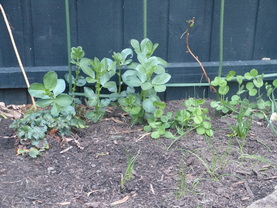
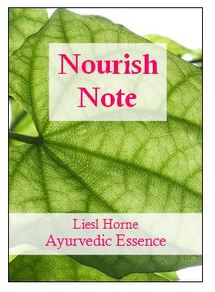














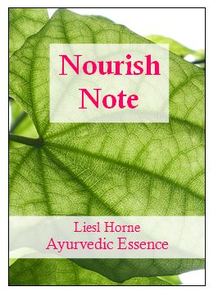


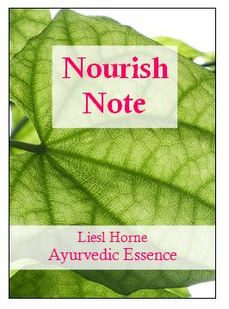
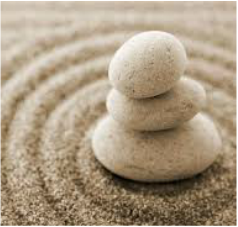


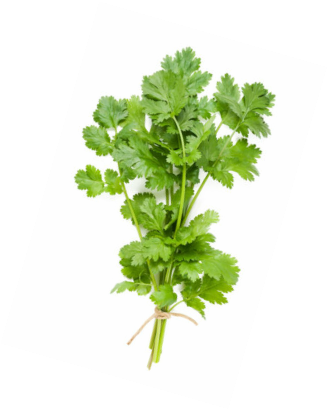







 RSS Feed
RSS Feed